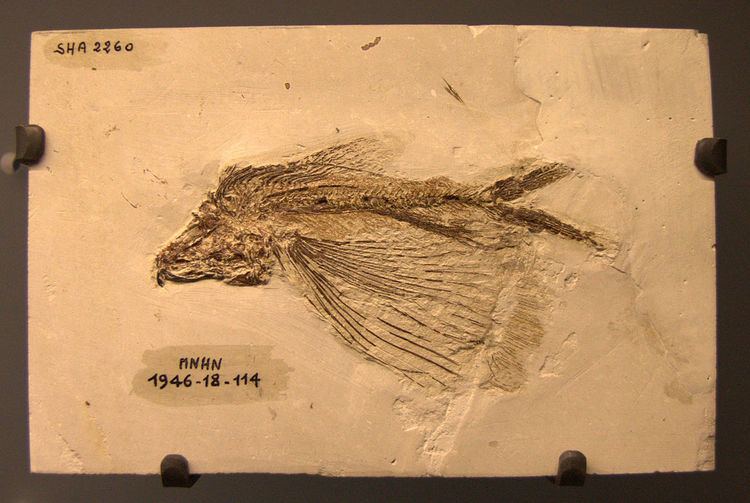Kingdom Animalia Subphylum Vertebrata Superclass Osteichthyes Rank Species | Phylum Chordata Infraphylum Gnathostomata Class Actinopterygii | |
 | ||
Cheirothrix lewisii is a species of prehistoric flying ray-finned fish that is included in the order Alepisauriformes, all the members of which are extinct. It dates back to the Late Cretaceous and its fossilised remains were found in fish-rich fossil deposits in Lebanon.
Contents
Description
The fossilised remains of Cheirothrix lewisii were found in limestone strata in Lebanon dating back about 99 million years. This fish was first described by Davis in 1887 and was named in honour of Professor E. R. Lewis of the American College in Beirut. Professor Lewis had originally found the fossil at Sahel Alma on Mount Lebanon. In this famous fossil location, about sixty species of fish have been found, none of them known from elsewhere in the world. Cheirothrix lewisii is characterized by enormous pectoral fins and the ventral lobe of the tail fin is also much enlarged. It seems likely that these fish could launch themselves out of the water and glide hundreds of metres (yards) through the air, probably to evade predators.
Distribution
During the Cretaceous era, sea levels were much higher than they are now. The fish remains at Sahel Alma are very well preserved. The rock is a fine-grained limestone found in an area much folded and faulted and is laid down in thick beds. The fish may have died because of a localized shortage of oxygen. Five specimens of Cheirothrix lewisii were found, each preserved in such detail that the fifty or so vertebrae can be counted and the branching rays of the pectoral fins can be seen clearly. The holotype is a cleft slab of limestone with remains of the fish on both sides. It is now kept in the Natural History Museum in London.
Another member of the genus, Cheirothrix libanicus, is found in the same fossil bed and other members of the genus are known from 84-million-year-old deposits in Germany.
